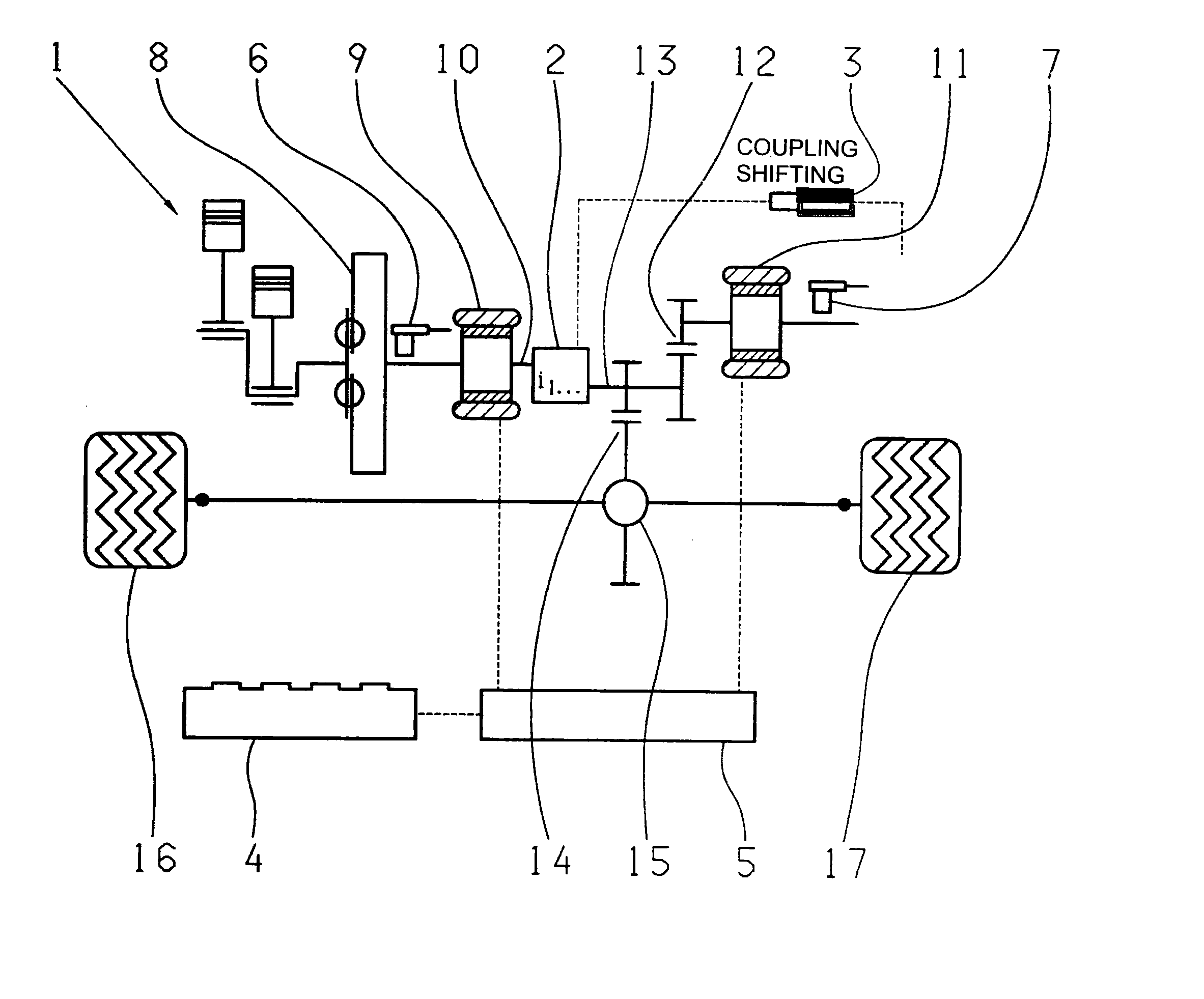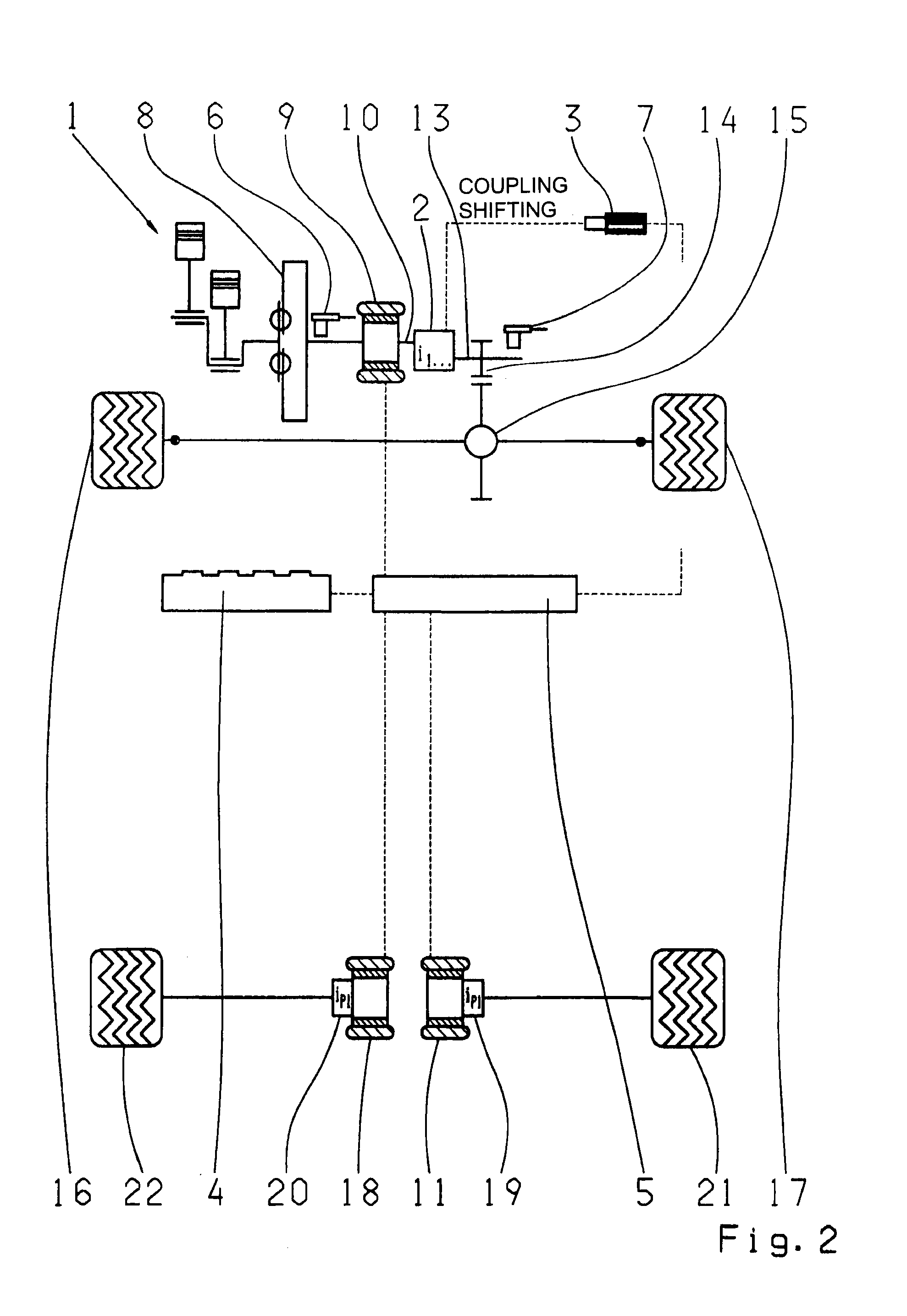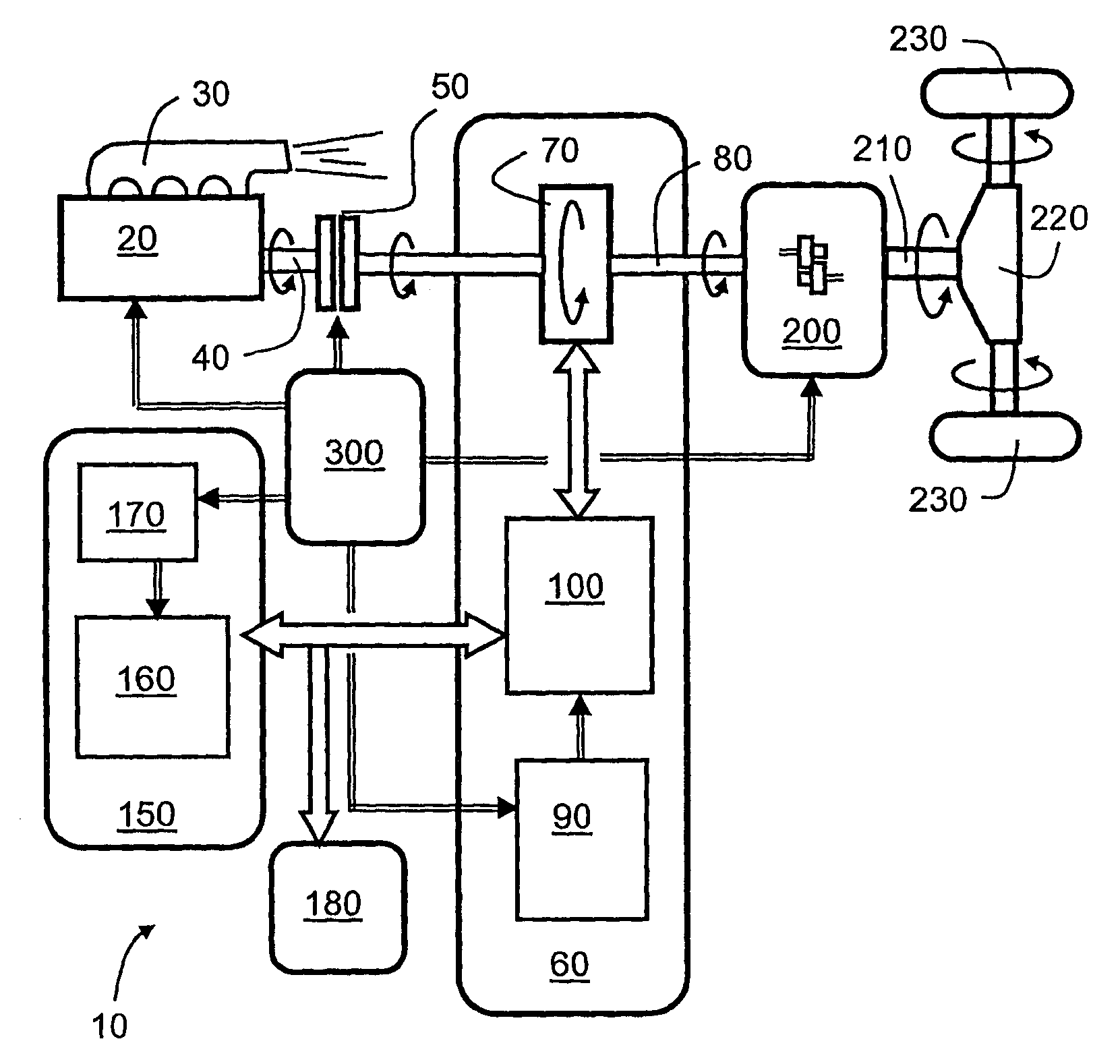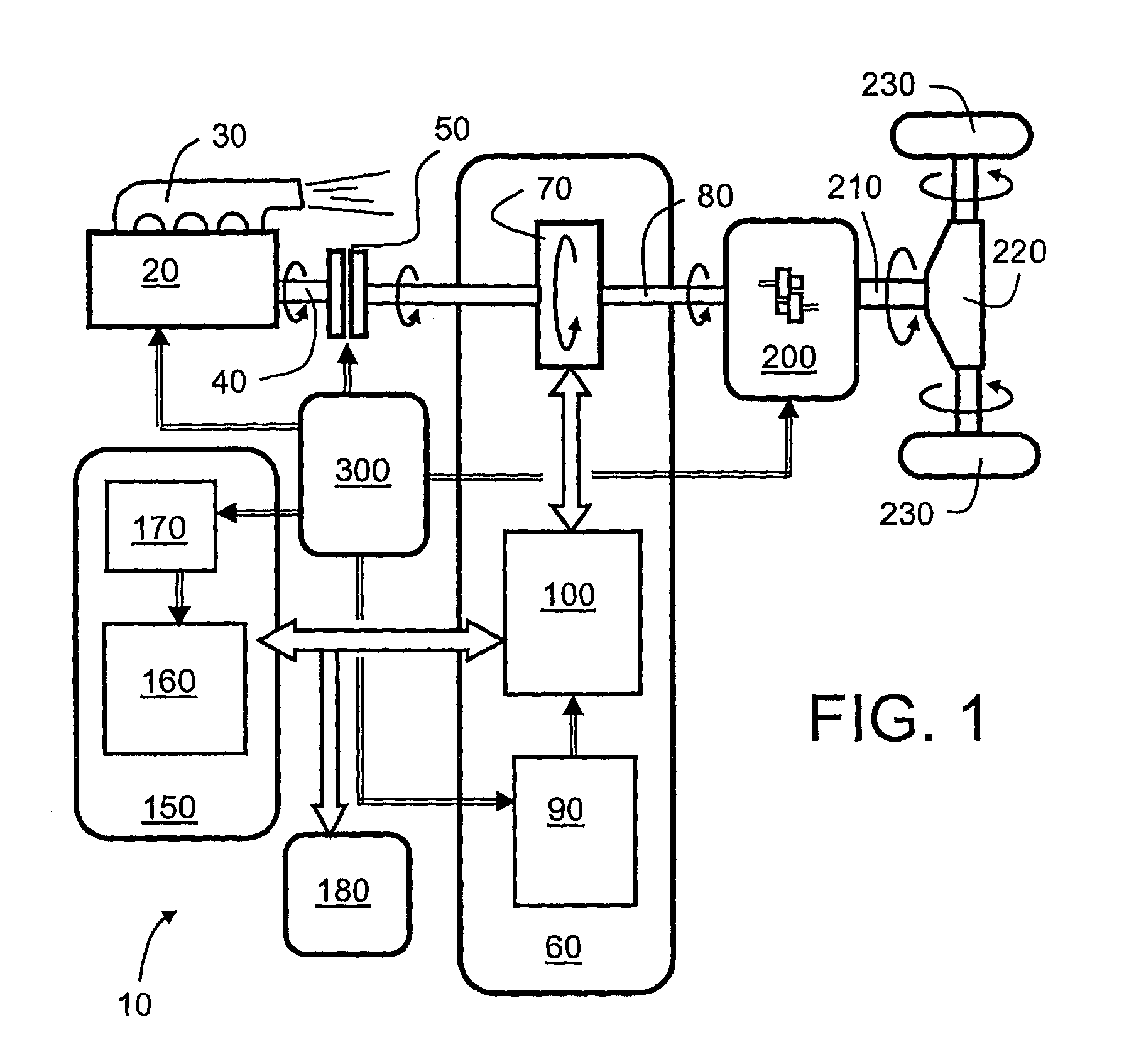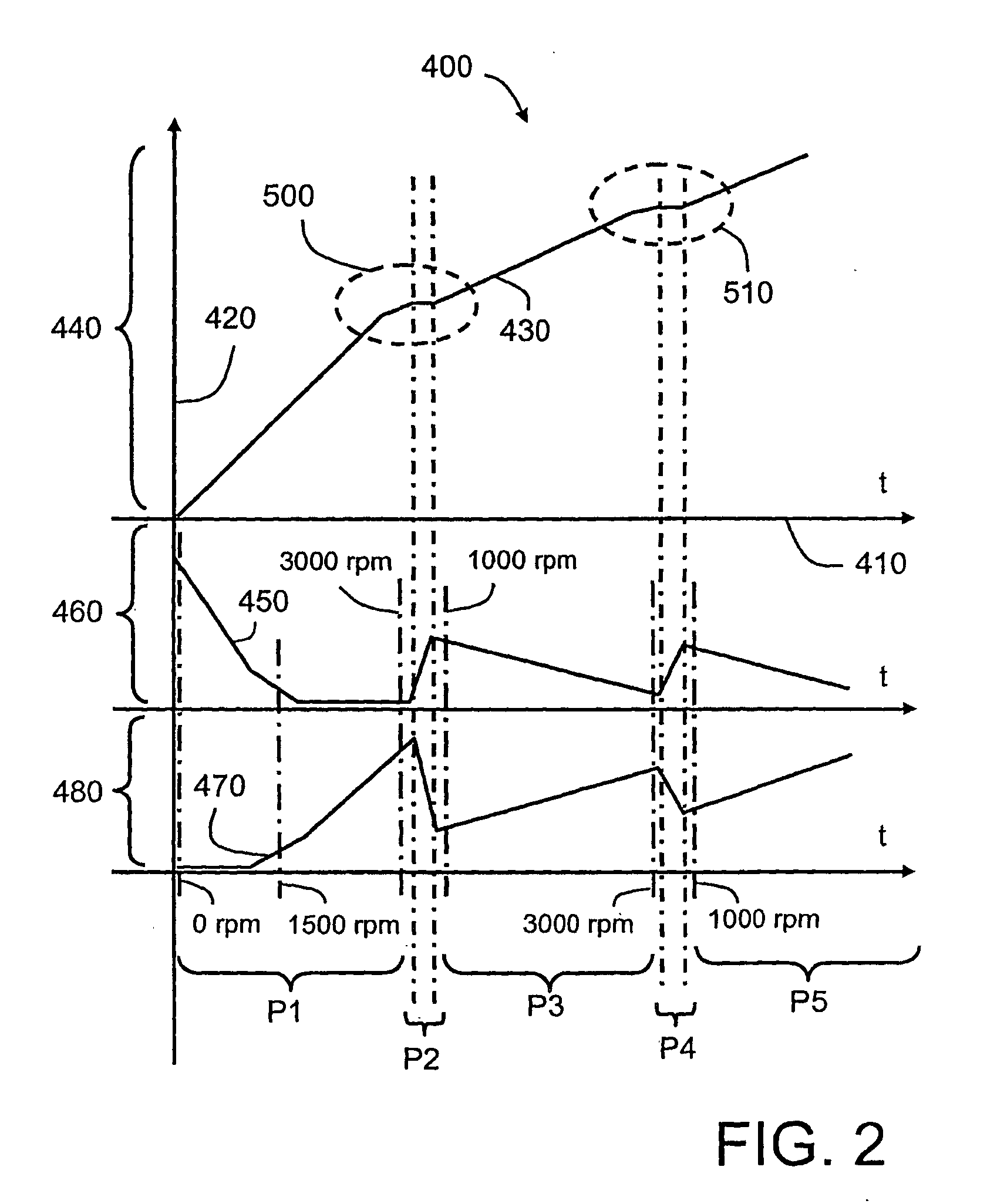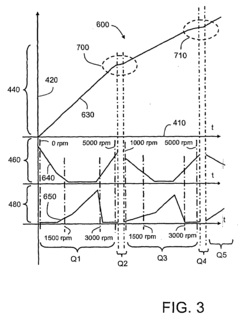Mild hybrid systems in improving the efficiency of electric railways
AUG 18, 20259 MIN READ
Generate Your Research Report Instantly with AI Agent
Patsnap Eureka helps you evaluate technical feasibility & market potential.
Mild Hybrid Railway Evolution and Objectives
The evolution of mild hybrid systems in electric railways represents a significant advancement in the pursuit of enhanced efficiency and sustainability within the transportation sector. This technology has emerged as a response to the growing demand for more energy-efficient and environmentally friendly rail solutions. The primary objective of implementing mild hybrid systems in electric railways is to optimize energy consumption, reduce operational costs, and minimize environmental impact.
The development of mild hybrid railway systems can be traced back to the early 2000s when the concept of regenerative braking began to gain traction in the rail industry. This initial step towards energy recovery laid the foundation for more sophisticated hybrid technologies. As the technology progressed, the focus shifted towards integrating energy storage systems, such as batteries and supercapacitors, with existing electric propulsion systems.
One of the key milestones in the evolution of mild hybrid railway systems was the introduction of on-board energy storage solutions. These systems allowed for the capture and reuse of braking energy, which would otherwise be dissipated as heat. This innovation not only improved energy efficiency but also enabled trains to operate in areas with limited or no overhead electrification, thereby expanding the operational flexibility of electric railways.
The objectives of mild hybrid systems in electric railways have expanded beyond mere energy efficiency. They now encompass a range of goals, including peak power reduction, improved acceleration performance, and enhanced reliability. By providing supplementary power during acceleration and hill climbing, mild hybrid systems can reduce the strain on the main power supply, leading to lower infrastructure costs and improved overall system performance.
Another critical objective is the reduction of greenhouse gas emissions. As governments worldwide implement stricter environmental regulations, the rail industry is under pressure to minimize its carbon footprint. Mild hybrid systems contribute significantly to this goal by optimizing energy use and reducing reliance on fossil fuels in non-electrified sections of the railway network.
Looking ahead, the evolution of mild hybrid railway systems is expected to continue, with a focus on further integration of renewable energy sources and advanced energy management algorithms. The ultimate aim is to create a more resilient, efficient, and sustainable rail transportation system that can adapt to the changing energy landscape and meet the growing demands of modern society.
The development of mild hybrid railway systems can be traced back to the early 2000s when the concept of regenerative braking began to gain traction in the rail industry. This initial step towards energy recovery laid the foundation for more sophisticated hybrid technologies. As the technology progressed, the focus shifted towards integrating energy storage systems, such as batteries and supercapacitors, with existing electric propulsion systems.
One of the key milestones in the evolution of mild hybrid railway systems was the introduction of on-board energy storage solutions. These systems allowed for the capture and reuse of braking energy, which would otherwise be dissipated as heat. This innovation not only improved energy efficiency but also enabled trains to operate in areas with limited or no overhead electrification, thereby expanding the operational flexibility of electric railways.
The objectives of mild hybrid systems in electric railways have expanded beyond mere energy efficiency. They now encompass a range of goals, including peak power reduction, improved acceleration performance, and enhanced reliability. By providing supplementary power during acceleration and hill climbing, mild hybrid systems can reduce the strain on the main power supply, leading to lower infrastructure costs and improved overall system performance.
Another critical objective is the reduction of greenhouse gas emissions. As governments worldwide implement stricter environmental regulations, the rail industry is under pressure to minimize its carbon footprint. Mild hybrid systems contribute significantly to this goal by optimizing energy use and reducing reliance on fossil fuels in non-electrified sections of the railway network.
Looking ahead, the evolution of mild hybrid railway systems is expected to continue, with a focus on further integration of renewable energy sources and advanced energy management algorithms. The ultimate aim is to create a more resilient, efficient, and sustainable rail transportation system that can adapt to the changing energy landscape and meet the growing demands of modern society.
Electric Railway Efficiency Market Analysis
The electric railway market has been experiencing significant growth and transformation in recent years, driven by increasing urbanization, environmental concerns, and the need for efficient transportation systems. The global electric railway market size was valued at approximately $58 billion in 2020 and is projected to reach $80 billion by 2027, growing at a CAGR of 5.2% during the forecast period.
The demand for electric railways is primarily fueled by the rising need for sustainable and energy-efficient transportation solutions. Governments worldwide are implementing stringent regulations to reduce carbon emissions, which has led to increased investments in electrification of railway networks. This trend is particularly evident in developing countries, where rapid urbanization and population growth are driving the expansion of public transportation infrastructure.
In terms of regional market analysis, Europe currently holds the largest share of the electric railway market, followed by Asia-Pacific and North America. European countries, such as Germany, France, and the United Kingdom, have well-established electric railway networks and continue to invest in modernization and expansion projects. The Asia-Pacific region, particularly China and India, is expected to witness the fastest growth due to massive infrastructure development initiatives and increasing government support for sustainable transportation.
The market for electric railway efficiency solutions is highly competitive, with key players focusing on developing innovative technologies to improve energy efficiency and reduce operational costs. Major companies in this sector include Siemens AG, Alstom SA, Bombardier Inc., and ABB Ltd. These companies are investing heavily in research and development to create advanced power management systems, regenerative braking technologies, and energy storage solutions.
The adoption of mild hybrid systems in electric railways is gaining traction as a promising approach to enhance overall efficiency. These systems combine conventional electric propulsion with auxiliary power sources, such as batteries or supercapacitors, to optimize energy consumption and reduce peak power demands. The market for mild hybrid systems in electric railways is expected to grow at a CAGR of 6.8% from 2021 to 2026.
Key factors driving the demand for mild hybrid systems in electric railways include the potential for energy savings, improved acceleration performance, and reduced infrastructure costs. Railway operators are increasingly recognizing the benefits of these systems in terms of lower maintenance requirements and extended component lifespans. Additionally, mild hybrid systems offer the flexibility to operate in both electrified and non-electrified sections of railway networks, making them particularly attractive for regions with partial electrification.
The demand for electric railways is primarily fueled by the rising need for sustainable and energy-efficient transportation solutions. Governments worldwide are implementing stringent regulations to reduce carbon emissions, which has led to increased investments in electrification of railway networks. This trend is particularly evident in developing countries, where rapid urbanization and population growth are driving the expansion of public transportation infrastructure.
In terms of regional market analysis, Europe currently holds the largest share of the electric railway market, followed by Asia-Pacific and North America. European countries, such as Germany, France, and the United Kingdom, have well-established electric railway networks and continue to invest in modernization and expansion projects. The Asia-Pacific region, particularly China and India, is expected to witness the fastest growth due to massive infrastructure development initiatives and increasing government support for sustainable transportation.
The market for electric railway efficiency solutions is highly competitive, with key players focusing on developing innovative technologies to improve energy efficiency and reduce operational costs. Major companies in this sector include Siemens AG, Alstom SA, Bombardier Inc., and ABB Ltd. These companies are investing heavily in research and development to create advanced power management systems, regenerative braking technologies, and energy storage solutions.
The adoption of mild hybrid systems in electric railways is gaining traction as a promising approach to enhance overall efficiency. These systems combine conventional electric propulsion with auxiliary power sources, such as batteries or supercapacitors, to optimize energy consumption and reduce peak power demands. The market for mild hybrid systems in electric railways is expected to grow at a CAGR of 6.8% from 2021 to 2026.
Key factors driving the demand for mild hybrid systems in electric railways include the potential for energy savings, improved acceleration performance, and reduced infrastructure costs. Railway operators are increasingly recognizing the benefits of these systems in terms of lower maintenance requirements and extended component lifespans. Additionally, mild hybrid systems offer the flexibility to operate in both electrified and non-electrified sections of railway networks, making them particularly attractive for regions with partial electrification.
Mild Hybrid System Challenges in Railways
The implementation of mild hybrid systems in electric railways presents several significant challenges that need to be addressed for successful integration and optimal performance. One of the primary obstacles is the complexity of integrating hybrid technology into existing railway infrastructure. Unlike automotive applications, railway systems have unique power requirements and operational constraints that demand careful consideration.
Energy management and storage pose another critical challenge. Mild hybrid systems rely on efficient energy recuperation and storage mechanisms, which can be challenging to implement in railway applications due to the high power demands and frequent acceleration/deceleration cycles. Developing robust and compact energy storage solutions that can withstand the harsh railway environment while providing sufficient power and energy capacity is a key technical hurdle.
The weight and space constraints of railway vehicles also present significant challenges for mild hybrid system integration. Adding hybrid components such as batteries, power electronics, and control systems must be done without compromising the vehicle's payload capacity or passenger comfort. This requires innovative design approaches and the use of lightweight, high-performance materials.
Reliability and durability are paramount in railway applications, and mild hybrid systems must meet stringent safety and performance standards. Ensuring the long-term reliability of hybrid components under the demanding conditions of railway operations, including vibration, temperature variations, and continuous high-power cycling, is a significant engineering challenge.
Another hurdle is the development of sophisticated control strategies that can optimize the interplay between the electric traction system and the hybrid components. These control algorithms must be capable of managing power flow, predicting energy demands, and adapting to various operational scenarios to maximize efficiency gains.
The integration of mild hybrid systems also raises concerns about electromagnetic compatibility (EMC) and interference with existing railway signaling and communication systems. Ensuring that the hybrid system does not disrupt critical railway operations is essential for safety and regulatory compliance.
Cost-effectiveness remains a significant challenge, as the implementation of mild hybrid technology must demonstrate clear economic benefits in terms of energy savings and reduced maintenance costs to justify the initial investment. This requires careful analysis of lifecycle costs and performance improvements across various railway operational scenarios.
Lastly, the regulatory landscape and standardization of mild hybrid systems in railways are still evolving. Developing and adhering to industry standards while navigating the complex regulatory environment across different regions adds another layer of complexity to the implementation of this technology in electric railways.
Energy management and storage pose another critical challenge. Mild hybrid systems rely on efficient energy recuperation and storage mechanisms, which can be challenging to implement in railway applications due to the high power demands and frequent acceleration/deceleration cycles. Developing robust and compact energy storage solutions that can withstand the harsh railway environment while providing sufficient power and energy capacity is a key technical hurdle.
The weight and space constraints of railway vehicles also present significant challenges for mild hybrid system integration. Adding hybrid components such as batteries, power electronics, and control systems must be done without compromising the vehicle's payload capacity or passenger comfort. This requires innovative design approaches and the use of lightweight, high-performance materials.
Reliability and durability are paramount in railway applications, and mild hybrid systems must meet stringent safety and performance standards. Ensuring the long-term reliability of hybrid components under the demanding conditions of railway operations, including vibration, temperature variations, and continuous high-power cycling, is a significant engineering challenge.
Another hurdle is the development of sophisticated control strategies that can optimize the interplay between the electric traction system and the hybrid components. These control algorithms must be capable of managing power flow, predicting energy demands, and adapting to various operational scenarios to maximize efficiency gains.
The integration of mild hybrid systems also raises concerns about electromagnetic compatibility (EMC) and interference with existing railway signaling and communication systems. Ensuring that the hybrid system does not disrupt critical railway operations is essential for safety and regulatory compliance.
Cost-effectiveness remains a significant challenge, as the implementation of mild hybrid technology must demonstrate clear economic benefits in terms of energy savings and reduced maintenance costs to justify the initial investment. This requires careful analysis of lifecycle costs and performance improvements across various railway operational scenarios.
Lastly, the regulatory landscape and standardization of mild hybrid systems in railways are still evolving. Developing and adhering to industry standards while navigating the complex regulatory environment across different regions adds another layer of complexity to the implementation of this technology in electric railways.
Current Mild Hybrid Solutions for Railways
01 Energy recovery and storage systems
Mild hybrid systems improve efficiency through advanced energy recovery and storage mechanisms. These systems capture and store energy during braking or deceleration, which can then be used to assist the engine during acceleration or other high-demand situations. This reduces the overall fuel consumption and improves the vehicle's efficiency.- Energy recovery and storage systems: Mild hybrid systems improve efficiency through advanced energy recovery and storage mechanisms. These systems capture and store energy during braking or deceleration, which can then be used to assist the engine during acceleration or other high-demand situations. This reduces the overall fuel consumption and improves the vehicle's efficiency.
- Engine start-stop technology: Mild hybrid systems often incorporate engine start-stop technology, which automatically shuts off the engine when the vehicle is stationary and restarts it when needed. This feature significantly reduces fuel consumption and emissions during idle periods, particularly in urban driving conditions.
- Electric motor assistance: Mild hybrid systems use electric motors to assist the internal combustion engine during acceleration and other high-load conditions. This electric boost reduces the load on the engine, allowing it to operate more efficiently and consume less fuel. The electric motor can also provide torque fill, smoothing out power delivery and improving overall driving experience.
- Intelligent power management: Advanced control systems in mild hybrids optimize the use of electric and combustion power sources. These systems continuously monitor driving conditions, energy levels, and power demands to determine the most efficient way to propel the vehicle. This intelligent power management ensures that the hybrid system operates at peak efficiency across various driving scenarios.
- Lightweight and compact design: Mild hybrid systems are designed to be lightweight and compact, minimizing their impact on vehicle weight and packaging. This approach helps maintain overall vehicle efficiency while providing the benefits of hybridization. The integration of hybrid components is optimized to reduce energy losses and improve the power-to-weight ratio of the vehicle.
02 Engine start-stop technology
Mild hybrid systems often incorporate engine start-stop technology, which automatically shuts off the engine when the vehicle is stationary and restarts it when needed. This feature significantly reduces fuel consumption and emissions during idle periods, particularly in urban driving conditions.Expand Specific Solutions03 Electric motor assistance
Mild hybrid systems use electric motors to assist the internal combustion engine during acceleration and other high-load conditions. This electric boost reduces the load on the engine, allowing for more efficient operation and improved fuel economy. The electric motor can also provide torque fill during gear changes, enhancing overall driving performance.Expand Specific Solutions04 Optimized power management
Advanced power management systems in mild hybrids optimize the use of electric and combustion power sources. These systems continuously monitor driving conditions and vehicle demands to determine the most efficient power distribution, maximizing overall system efficiency and reducing fuel consumption.Expand Specific Solutions05 Lightweight and compact design
Mild hybrid systems are designed to be lightweight and compact, minimizing their impact on vehicle weight and packaging. This approach helps maintain overall vehicle efficiency while providing the benefits of hybridization. The integration of components such as the electric motor, power electronics, and battery pack is optimized to reduce space requirements and weight.Expand Specific Solutions
Key Players in Mild Hybrid Railway Systems
The research on mild hybrid systems for improving electric railway efficiency is in a growth phase, with increasing market size due to global focus on sustainable transportation. The technology's maturity is advancing rapidly, driven by collaborations between major players. Companies like Hitachi, Siemens, and Alstom are leading innovation in this field, leveraging their extensive experience in railway systems. Automotive giants such as Hyundai, Kia, and Audi are contributing their hybrid technology expertise to the rail sector. Universities like Tongji and Central South are providing crucial research support. The competitive landscape is characterized by a mix of established rail manufacturers, automotive companies, and specialized technology providers, all vying to develop more efficient and cost-effective mild hybrid solutions for electric railways.
Hitachi Ltd.
Technical Solution: Hitachi Ltd. has made significant strides in mild hybrid systems for electric railways, focusing on their proprietary hybrid traction system. This system combines conventional electric traction with onboard energy storage devices, typically lithium-ion batteries or electric double-layer capacitors (EDLCs). Hitachi's approach allows for energy recuperation during braking, which is then stored and utilized during acceleration or to power auxiliary systems. Their system has demonstrated energy savings of up to 25% in suburban railway applications[6]. Hitachi has also developed advanced control algorithms that optimize the power split between the catenary supply and onboard storage, ensuring maximum efficiency across various operational scenarios. The company has successfully implemented this technology in several projects, including the Class 800/801 trains for the UK's Intercity Express Programme[7].
Strengths: Proven energy savings, flexibility in energy storage options, and successful large-scale implementations. Weaknesses: Potential weight increase due to onboard storage systems and complexity in integrating with existing infrastructure.
Mitsubishi Electric Corp.
Technical Solution: Mitsubishi Electric Corp. has developed a sophisticated mild hybrid system for electric railways, focusing on their S-EIV (Station Energy Saving Inverter) technology. This system utilizes large-capacity electric double-layer capacitors (EDLCs) to store regenerative energy from braking trains and supply it to accelerating trains within the same power supply section. Mitsubishi's approach not only improves energy efficiency but also stabilizes line voltage, reducing power peaks and troughs. The S-EIV system has demonstrated energy savings of up to 30% in urban rail networks[8]. Additionally, Mitsubishi has integrated advanced power electronics and control systems to optimize energy flow and maximize regenerative braking efficiency. The company has successfully implemented this technology in several Japanese rail networks, showcasing its effectiveness in real-world applications[9].
Strengths: High energy savings, voltage stabilization benefits, and proven track record in dense urban rail systems. Weaknesses: May require significant substation modifications and may have limited applicability in less frequent service areas.
Core Innovations in Mild Hybrid Rail Technology
Hybrid drive train for a motor vehicle and method for operating the hybrid drive train
PatentInactiveUS20110098151A1
Innovation
- A hybrid drive train design incorporating multiple electric machines, a multi-gear transmission with electric shift actuation, and double-layer condensers, which omits unnecessary components like starting clutches and reverse gears, utilizing electric machines for starting and maneuvering, and employing torque vectoring for improved efficiency and reduced weight.
Hybrid powertrain and a method for controlling a hybrid powertrain
PatentActiveUS20090239703A1
Innovation
- A hybrid powertrain design that utilizes an electric machine arrangement to extend the rotation rate range in given gearing ratios, both at lower and higher rotation rates, allowing for reduced frequency of gear changes and enabling smoother acceleration and deceleration, with the electric machine providing maximum power at rotation rate limits and the combustion engine delivering power at intermediate speeds.
Environmental Impact of Mild Hybrid Railways
The implementation of mild hybrid systems in electric railways has significant environmental implications, primarily through reduced energy consumption and emissions. These systems, which combine conventional electric propulsion with energy storage devices, offer a more efficient approach to railway operations. By capturing and reusing braking energy, mild hybrid systems can reduce the overall energy demand of trains by up to 30%, leading to a substantial decrease in greenhouse gas emissions.
The environmental benefits extend beyond energy efficiency. Mild hybrid systems contribute to noise reduction in urban areas, as they allow for smoother acceleration and deceleration processes. This is particularly important in densely populated regions where railway noise pollution is a growing concern. Additionally, the reduced wear on braking systems results in less particulate matter released into the atmosphere, further improving air quality along railway corridors.
The adoption of mild hybrid technology in railways also has positive implications for land use and biodiversity conservation. As these systems improve the overall efficiency of rail transport, they can potentially reduce the need for expanding railway infrastructure, thus minimizing habitat fragmentation and preserving natural ecosystems. Furthermore, the increased energy efficiency may lead to a reduced reliance on fossil fuel-based electricity generation, indirectly contributing to the preservation of landscapes that might otherwise be affected by power plant construction or fuel extraction activities.
From a lifecycle perspective, mild hybrid systems in railways offer environmental advantages. While the production of energy storage components, such as batteries or supercapacitors, does have an environmental footprint, the long-term benefits of reduced energy consumption and emissions over the operational life of the railway system generally outweigh these initial impacts. Moreover, as the technology matures, the environmental costs associated with component manufacturing are likely to decrease.
The integration of mild hybrid systems aligns well with global efforts to decarbonize transportation. By enhancing the already low carbon footprint of electric railways, this technology supports the transition towards more sustainable mobility solutions. It also complements other environmental initiatives in the railway sector, such as the use of renewable energy sources for powering trains and the implementation of smart grid technologies for optimizing energy distribution.
In conclusion, the environmental impact of mild hybrid railways is predominantly positive, offering a pathway to more sustainable and eco-friendly public transportation. As the technology continues to evolve and become more widely adopted, its role in mitigating the environmental challenges associated with transportation is expected to grow, contributing significantly to global efforts in combating climate change and promoting sustainable development.
The environmental benefits extend beyond energy efficiency. Mild hybrid systems contribute to noise reduction in urban areas, as they allow for smoother acceleration and deceleration processes. This is particularly important in densely populated regions where railway noise pollution is a growing concern. Additionally, the reduced wear on braking systems results in less particulate matter released into the atmosphere, further improving air quality along railway corridors.
The adoption of mild hybrid technology in railways also has positive implications for land use and biodiversity conservation. As these systems improve the overall efficiency of rail transport, they can potentially reduce the need for expanding railway infrastructure, thus minimizing habitat fragmentation and preserving natural ecosystems. Furthermore, the increased energy efficiency may lead to a reduced reliance on fossil fuel-based electricity generation, indirectly contributing to the preservation of landscapes that might otherwise be affected by power plant construction or fuel extraction activities.
From a lifecycle perspective, mild hybrid systems in railways offer environmental advantages. While the production of energy storage components, such as batteries or supercapacitors, does have an environmental footprint, the long-term benefits of reduced energy consumption and emissions over the operational life of the railway system generally outweigh these initial impacts. Moreover, as the technology matures, the environmental costs associated with component manufacturing are likely to decrease.
The integration of mild hybrid systems aligns well with global efforts to decarbonize transportation. By enhancing the already low carbon footprint of electric railways, this technology supports the transition towards more sustainable mobility solutions. It also complements other environmental initiatives in the railway sector, such as the use of renewable energy sources for powering trains and the implementation of smart grid technologies for optimizing energy distribution.
In conclusion, the environmental impact of mild hybrid railways is predominantly positive, offering a pathway to more sustainable and eco-friendly public transportation. As the technology continues to evolve and become more widely adopted, its role in mitigating the environmental challenges associated with transportation is expected to grow, contributing significantly to global efforts in combating climate change and promoting sustainable development.
Economic Feasibility of Mild Hybrid Rail Systems
The economic feasibility of mild hybrid rail systems is a critical consideration for railway operators and policymakers seeking to improve the efficiency and sustainability of electric railways. This analysis examines the financial implications of implementing mild hybrid technology in rail systems, taking into account both the initial investment costs and the potential long-term benefits.
The primary economic advantage of mild hybrid rail systems lies in their potential for significant energy savings. By incorporating regenerative braking and energy storage systems, these hybrid systems can capture and reuse energy that would otherwise be lost during braking, reducing overall energy consumption. Studies have shown that mild hybrid systems can achieve energy savings of up to 30% compared to conventional electric railways, translating into substantial cost reductions for operators.
Initial investment costs for mild hybrid rail systems are typically higher than those for traditional electric railways. The additional components, such as energy storage devices and power management systems, contribute to increased upfront expenses. However, these costs are often offset by the long-term operational savings and improved efficiency. The payback period for mild hybrid systems varies depending on factors such as route characteristics, energy prices, and system utilization, but generally ranges from 5 to 10 years.
Maintenance costs are another important factor in the economic feasibility assessment. While mild hybrid systems introduce additional components that require maintenance, they also reduce wear on traditional braking systems, potentially leading to lower overall maintenance expenses. The net impact on maintenance costs depends on the specific system design and operational conditions.
Government incentives and environmental regulations play a significant role in the economic viability of mild hybrid rail systems. Many countries offer subsidies or tax incentives for the adoption of energy-efficient transportation technologies, which can help offset the initial investment costs. Additionally, increasingly stringent emissions regulations may make mild hybrid systems more attractive from a compliance standpoint, potentially avoiding future penalties or retrofit costs.
The economic benefits of mild hybrid rail systems extend beyond direct operational costs. Improved energy efficiency can enhance the overall capacity of the rail network by reducing power demand during peak hours. This increased capacity can lead to higher revenue potential without the need for costly infrastructure expansions. Furthermore, the adoption of environmentally friendly technologies can improve public perception and potentially attract more passengers, contributing to increased ridership and revenue.
In conclusion, while the initial investment in mild hybrid rail systems may be higher than conventional electric railways, the long-term economic benefits are substantial. Energy savings, reduced maintenance costs, and potential government incentives contribute to a favorable economic outlook for these systems. As technology advances and economies of scale are realized, the economic feasibility of mild hybrid rail systems is expected to improve further, making them an increasingly attractive option for railway operators seeking to enhance efficiency and sustainability.
The primary economic advantage of mild hybrid rail systems lies in their potential for significant energy savings. By incorporating regenerative braking and energy storage systems, these hybrid systems can capture and reuse energy that would otherwise be lost during braking, reducing overall energy consumption. Studies have shown that mild hybrid systems can achieve energy savings of up to 30% compared to conventional electric railways, translating into substantial cost reductions for operators.
Initial investment costs for mild hybrid rail systems are typically higher than those for traditional electric railways. The additional components, such as energy storage devices and power management systems, contribute to increased upfront expenses. However, these costs are often offset by the long-term operational savings and improved efficiency. The payback period for mild hybrid systems varies depending on factors such as route characteristics, energy prices, and system utilization, but generally ranges from 5 to 10 years.
Maintenance costs are another important factor in the economic feasibility assessment. While mild hybrid systems introduce additional components that require maintenance, they also reduce wear on traditional braking systems, potentially leading to lower overall maintenance expenses. The net impact on maintenance costs depends on the specific system design and operational conditions.
Government incentives and environmental regulations play a significant role in the economic viability of mild hybrid rail systems. Many countries offer subsidies or tax incentives for the adoption of energy-efficient transportation technologies, which can help offset the initial investment costs. Additionally, increasingly stringent emissions regulations may make mild hybrid systems more attractive from a compliance standpoint, potentially avoiding future penalties or retrofit costs.
The economic benefits of mild hybrid rail systems extend beyond direct operational costs. Improved energy efficiency can enhance the overall capacity of the rail network by reducing power demand during peak hours. This increased capacity can lead to higher revenue potential without the need for costly infrastructure expansions. Furthermore, the adoption of environmentally friendly technologies can improve public perception and potentially attract more passengers, contributing to increased ridership and revenue.
In conclusion, while the initial investment in mild hybrid rail systems may be higher than conventional electric railways, the long-term economic benefits are substantial. Energy savings, reduced maintenance costs, and potential government incentives contribute to a favorable economic outlook for these systems. As technology advances and economies of scale are realized, the economic feasibility of mild hybrid rail systems is expected to improve further, making them an increasingly attractive option for railway operators seeking to enhance efficiency and sustainability.
Unlock deeper insights with Patsnap Eureka Quick Research — get a full tech report to explore trends and direct your research. Try now!
Generate Your Research Report Instantly with AI Agent
Supercharge your innovation with Patsnap Eureka AI Agent Platform!
